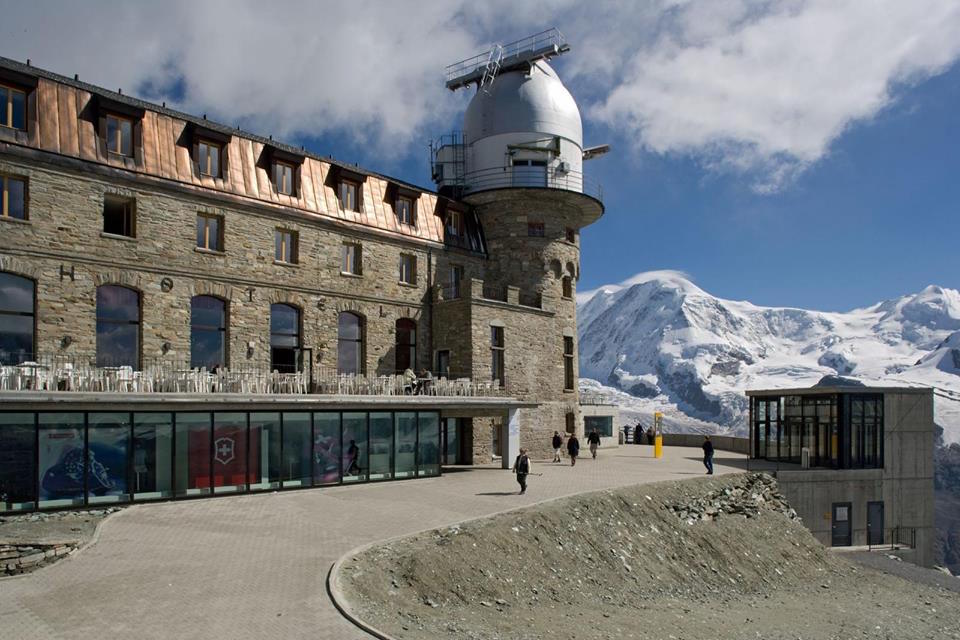Skift Take
Switzerland Tourism is employing “precision marketing” as the number of Chinese individual travelers rose last year while overall arrivals dropped. Tactics aim to be as precise as a Swiss watch; other destinations it competes with for longhaul Chinese travelers, including the U.S., Canada and New Zealand, should take note.
 Editor’s Note: Skift’s Gateway series broadens our news coverage geographically with first-hand, original stories from correspondents embedded in cities around ravhe world.
Editor’s Note: Skift’s Gateway series broadens our news coverage geographically with first-hand, original stories from correspondents embedded in cities around ravhe world.
We feature regular reports from Beijing, China; Capetown, South Africa, and Singapore. Gateway Beijing and Gateway Singapore, for example, signify that the reporters are writing from those cities although their coverage of the business of travel will meander to other locales in their regions. Read about the series here, and check out all the stories in the series here.
Rather than fret over a devastating 16 per cent drop in China (including Hong Kong) overnights last year, which they believe is temporary, the Swiss are pointing to the fact that travel by individual Chinese, as opposed to group travel, is rising.
It’s a trend the Swiss have been waiting for.
While travelers from China have grown to be Switzerland’s fifth largest market, with a record 1.52 million overnights in 2015, much of that is low-yield tour groups series taking the traditional route of Italy-Switzerland-France, and largely benefiting Swiss destinations such as Lucerne and Interlaken.
Terror attacks in European hot spots last year, along with low prices in new destinations in eastern, northern and southwestern Europe, saw this business decline. But while there were fewer camera-clickers, there was a noticeable rise in lifestyle-seekers for Switzerland.
Sales of the Swiss Travel Pass, which gives visitors unlimited travel on rail, bus, boat and tram in the Swiss Travel System network, rose 4.7 per cent last year. Other data, from Swiss Quality Hotels, which represents 60 properties in 40 locations throughout Switzerland, show a 144.5 per cent jump in the number of individual travelers from China in the first two months of 2017 compared with the same period in 2016.
Last-minute bookings were surging. About 12 per cent of their bookings were done on the same day of arrival; 20 per cent were within five days of arrival.
“This is an indication that Chinese travelers who have a Schengen visa are becoming more independent, spontaneous and go as they please,” said director of sales and marketing Amjad Nashashibi. “Most probably, such last-minute bookings are done on the mobile while travelling. They also spent more per overnight compared with the same period last year.
“Moreover, they stayed in average about two overnights per destination. We at Swiss Quality Hotels are observing a shift. Chinese travelers are visiting different regions in Switzerland rather than just ticking off the ‘must see’ landmarks.”
Time for some Swiss precision
The shift has led to Switzerland Tourism to switch gears from generic to what its director of China and Asia-Pacific, Simon Bosshart, describes as “precision marketing.”
We interviewed Bosshart and other Swiss tourism players during their recent roadshow in Singapore.
The China market is changing fast, he says. Even traditional tour operators, not just boutique and individual traveler operators, are setting up new teams or brands to service a new segment of travelers. “On the other hand, OTAs (online travel agencies) in China are enticing the young generation of Chinese travelers with new technology and distribution while buying directly from destinations to feed their independent clients,” says Bosshart.
Switzerland Tourism therefore wants to direct its focus less on groups and more on fostering specific travel interests for Chinese travelers such as summer outdoor lovers (hikers, bikers), winter guests (snow sports enthusiasts or simply snow lovers), culture buffs, and meeting and incentive groups.
It will also measure results differently. For example, it will judge the business created by travel trade partners more on the development of new products than number of arrivals. “We intend to trigger 920,000 Chinese overnights from 40 new products through cooperating with tour operators throughout China,” says Bosshart.
Similarly, it will measure its media success not just by large circulation numbers but coverage of specific travel interests. It aims to influence 900 media articles all over China, 140 of them on specific interests. Around 100 journalists from China, including bloggers, will be hosted on media trips.
Laying out the red carpet for Chinese
Back home, products are being made friendly to Chinese guests. Switzerland Tourism has partnered with Chinese driver-guide platform HiGuides to train and certify HiGuides in Switzerland to escort guests along the Grand Tour of Switzerland, which whisks clients through the country’s most beautiful regions at their own time, preference and pace. The service starts in the spring.
Fourteen ski schools in Switzerland are offering ski lessons in Chinese. Switzerland Tourism has also come up with a new one-stop shop offer that includes ski gear rental (skis, boots, helmet, goggle, gloves and clothes), ski tickets and ski lessons (two to four hours).
The development of the winter market is especially crucial. Switzerland Tourism is convinced China will become the world’s largest winter sports market. Present reality also bites: Its traditional markets Germany, Italy and France, which have been filling up all the rooms in peak winter season, are all in decline because there’s less money, either due to their weaker economies or the higher Swiss franc.
There’s likely to be more Chinese faces than Japanese in one of Switzerland’s famous winter destinations, Zermatt, whose car-free village and the Matterhorn draw thousands of Japanese each year yet still few Chinese.
Zermatt Bergbahnen, which is responsible for the mountain lifts in Zermatt and the surrounding areas, has just signed on three Chinese employees in Beijing, its first move to expand distribution in China, both through online platforms and tour operators. One of the representatives will be solely in charge of reaching out to the “wealthy” guests through connections with China’s ski associations and luxury market.
Zermatt Bergbahnen’s head of markets, Hansjuerg Michel, says data show there are already around 15 million skiers in China. “I am convinced they want to ski in a European resort and even if just every 10, 100 or 1,000 of them decides to visit Europe once, we will already have a nice number of Chinese skiing guests in Europe and hopefully some of them as well in Zermatt,” he says.
The Daily Newsletter
Our daily coverage of the global travel industry. Written by editors and analysts from across Skift’s brands.
Have a confidential tip for Skift? Get in touch
Tags: gateway, switzerland, tourism
Photo credit: A stay at the Kulmhotel Gornergrat in Zermatt, Switzerland comes with great views of the Matterhorn. Switzerland Tourism is working to attract Chinese tourists to its winter destinations. My Switzerland
